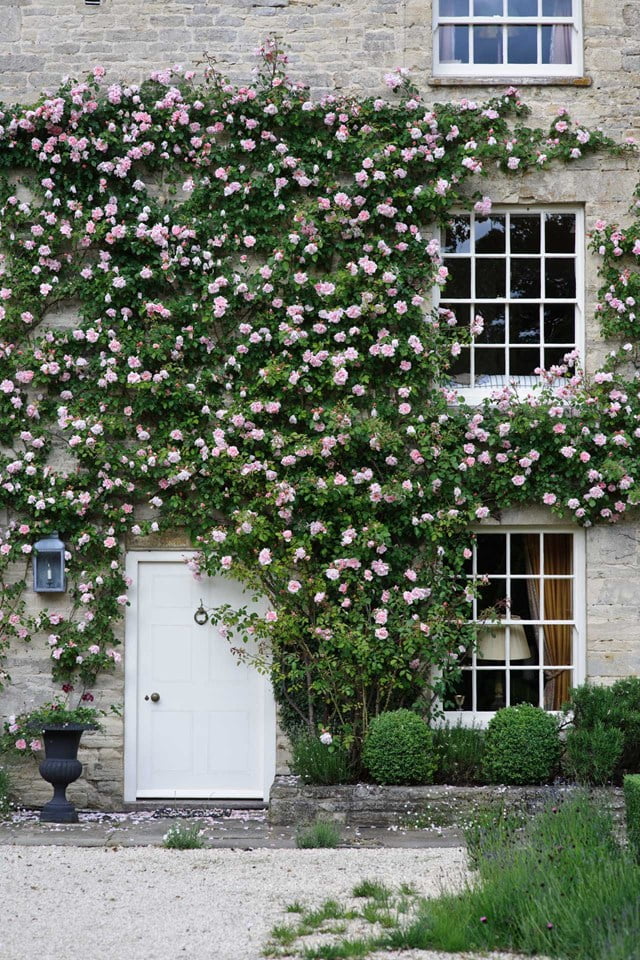
PLANTS FOR WINDOW BOXES
‘For the ultimate in low-maintenance planting, intersperse small balls of box with a seasonal display of bulbs and summer bedding: tulips in spring, geraniums in summer and winter pansies in autumn – or almost any annuals that take your fancy.’

PLANTS FOR FRONT GARDENS
‘Hummocks of clipped lavender work well in a southfacing front garden. For small spaces, repeating shapes can be most effective. Try contrasting the lavender balls with taller plants such as alliums or verbascum in between. For shady front gardens, you can’t go wrong with clipped box (Buxus sempervirens) or bay tree standards with hart’s tongue ferns to create different shapes.’
If you want privacy, it’s better to opt for a mature hedge – a 1.5-metre yew hedge costs £200-300 a metre and is easy to keep nicely clipped. Lollipop-pruned hornbeam or box also offer privacy without looking dominant. Try pleaching the trees on a horizontal plane, allowing them to grow together to form a living wall.

CHOOSING CLIMBING PLANTS
‘There are many plants to train up the front of your house, but beware of those like Clematis montana and Virginia creeper that will quickly rampage up and over everything,’ says garden editor Clare Foster. ‘Climbing roses and wisteria are the classic countryhouse choices. For urban spaces, Trachelospermum jasminoides is one of the easiest climbers, happy in sun or semi-shade. Climbers are best trained using a wire and vineeye system. Screw the vine-eyes into the masonry to create a system of taut wires, either vertical or horizontal, and about 45cm apart. For smaller climbers such as clematis, screw a wooden trellis to the wall. Try Green Wall Systems or Stainless Steel Solutions for ready-made kits.’
[Source:- House]



